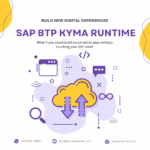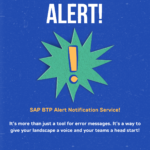The Hidden Cost of Bad Data
In the world of enterprise technology, master data is the foundation on which operations, analytics, and automation are built. Yet, many organizations struggle with inconsistent, duplicate, or outdated data across their SAP systems. The consequences? Faulty reports, failed transactions, compliance risks, and frustrated teams.
Enter SAP Master Data Governance (MDG)—a powerful solution designed to ensure data quality, consistency, and governance across an enterprise. But even with SAP MDG, businesses often face challenges in maintaining accurate and harmonized master data.
The Challenge: Data Discrepancies in SAP
One of the most common issues organizations face is data inconsistencies across multiple SAP systems—particularly after mergers, acquisitions, or system migrations.
Imagine this:
- A customer record in SAP ERP differs from the one in SAP CRM, leading to incorrect billing.
- Product codes are misaligned between procurement and sales, causing order fulfillment errors.
- Vendor details vary across different regions, leading to compliance risks.
These issues slow down business operations and increase costs, making data harmonization a priority.
The SAP MDG Solution: A Step-by-Step Approach
SAP MDG provides a structured approach to identifying, cleansing, and governing master data. Here’s how you can use it to solve these problems:
Step 1: Identify the Gaps
Start by running data quality reports within SAP MDG to detect inconsistencies, duplicates, and missing fields. Use SAP Information Steward to gain visibility into the root cause of data errors.
Step 2: Standardize & Cleanse Data
Leverage SAP MDG’s data quality management tools to:
- Enforce data validation rules for key fields (e.g., customer name, address, payment terms).
- Automatically flag or merge duplicate records using data matching algorithms.
- Integrate third-party data services (like Dun & Bradstreet) to enhance data accuracy.
Step 3: Establish a Single Source of Truth
Use SAP MDG’s consolidation framework to merge fragmented records across different SAP modules. This ensures that each business unit operates with a single, trusted version of master data.
Step 4: Implement Workflows & Governance
Master data should not be a one-time clean-up effort—it needs ongoing governance. SAP MDG allows businesses to:
- Set up approval workflows to ensure that any data changes follow company policies.
- Automate data replication across SAP and non-SAP systems to maintain consistency.
- Track data lineage and audit trails for compliance and reporting.
Step 5: Monitor & Improve Continuously
With SAP MDG analytics, organizations can measure data quality over time and refine governance policies as business needs evolve. Regular audits help identify new inconsistencies before they impact operations.
Why Master Data Governance Matters
Poor master data leads to inefficiencies, revenue loss, and poor customer experiences. By implementing SAP MDG, businesses can: ✅ Reduce errors in key transactions (e.g., invoicing, procurement, supply chain management). ✅ Improve operational efficiency by eliminating duplicate or conflicting data. ✅ Ensure compliance with industry regulations by maintaining accurate and auditable data records. ✅ Enhance customer satisfaction by providing consistent, reliable information across all touchpoints.
Final Thoughts
Master data inconsistencies are a silent killer of productivity, and ignoring them can lead to significant financial and operational losses. By leveraging SAP MDG, organizations can take a proactive approach to data governance, ensuring cleaner, more reliable data across the enterprise.
With the right strategy in place, businesses can transform data from a liability into a competitive advantage.











